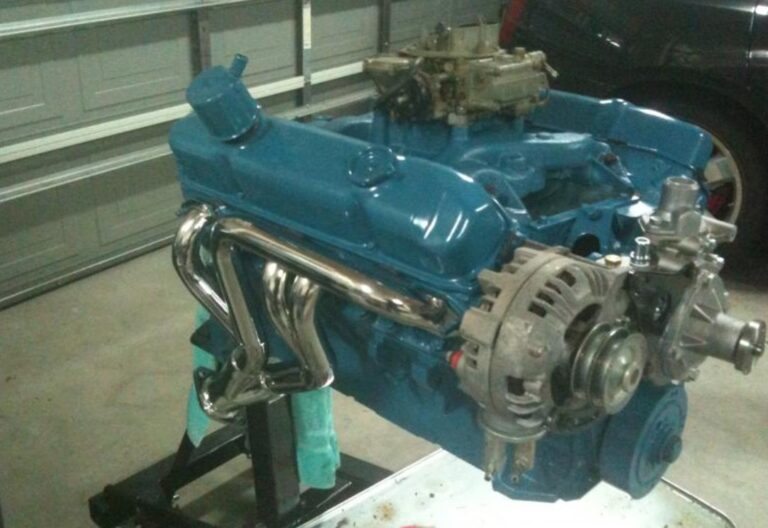Can You Run A Jet Ski Out Of Water? Brief Answer
I am frequently asked Can You Run A Jet Ski Out Of Water? Or if it can be operated out of the water. This apprehension stems from the fact that other boats must be submerged before operation. The engine cooling system on the watercraft is completely different.
Let’s discuss the considerations you should make when running a jet ski out of the water. Jet skis and different personal watercraft can be operated on dry land. Normally, you can start and operate for 15 seconds without a cooling supply.
Since the water supply cools the engine and exhaust, you can run a ski without water for up to two minutes using a flush adapter and water hose.
If you must start your jet ski outside of the water, you should only do so when required and for, at most, what is advised in your manual. You should do this for a few different reasons.
Can You Run A Jet Ski Out Of Water?
Any jet ski can be started off the water, but only for a brief while! The ideal technique is to run the engine for about 2 minutes to cool it with flowing water by connecting a garden hose to its flush port. However, it is safest to operate only for 15 seconds without any water supply.

How To Run A Jet Ski Out Of Water?
When a jet ski is not in the water, there are two main ways to operate it. You have two options: perform a dry run or connect a hose to the flushing port. Below, I’ll describe both approaches.
How To Use A Jet Ski Without A Hose To Drain The Water?
Make sure your jet ski is mounted to a solid surface first. Make sure there is no chance it could topple over. It would help if you elevated your Jet Ski to keep dirt or rocks from entering your Jet Ski intake.

Next, start the engine by turning the ignition key to the on position. Avoid turning the engine on full throttle or for an extended period. Always perform dry runs at a lower RPM.
Last but not least, shut off the engine within 15 seconds. The maximum time your jet ski should be out of the water is 15 seconds. It could sustain harm if you let it run dry for too long.
How To Use A Hose To Drain The Water From Your Jet Ski?
I strongly advise you to study the instruction manual for your particular model before beginning this process because every Jet Ski is unique, and you can only assume this procedure will sometimes be the same. Most Jet Skis contain a flushing port to which you may connect a hose. Observe these steps to use the Jet Ski:
- With the water off, attach the hose.
- Start the engine once the hose has been securely fastened.
- Please turn on the water when the engine fires up, and let it run for about two minutes.
- Disconnect the hose, stop the water flow, and turn off the engine.
The procedure is simple, but you must carefully follow the instructions because errors could seriously harm the watercraft.
In addition, the water pressure must always be kept low. Another general principle is never to flush a hot engine. Allow the engine to cool for at least 20 minutes before starting the procedure above.
When Should You Start A Jet Ski Out Of Water?
I’ll go through the most frequent ones in the list of reasons below, but there are a few reasons why you might wish to run a jet ski out of water.

- Before entering the water, conduct a test run: Before releasing your jet ski into the water, it never hurts to give it a little dry run. Before putting it in the water, you want to check sure everything looks to be working properly.
- Purging or flushing the systems is a common after-ride procedure for jet skis. When you start winterizing after the last ride of the season, flushing the systems is much more crucial (especially in salt water).
- When buying a pre-owned jet ski: You should put the jet ski you are considering buying through more than this test.
- However, it’s only the first of a long list of steps to take in your due diligence. You can proceed to the more thorough portions of the inspection if it sounds fine, which is a positive indication. The fact that jet skis with high hours might not be able to start the water is significant.
Can You Start A Sea-Doo Out Of Water?
It can run out of water only when a Sea-Doo is attached to a hose. One brand whose water supply you should always have is Sea-Doo. It depends on a securely fitting carbon ring that encircles the driveshaft and keeps water from entering the engine.
The carbon ring must be kept cool by water to prevent overheating and engine damage from water leaking into the hull. Therefore, run any out-of-water operations while the hose is connected!
How To Flush A Sea-Doo?
A flush adaptor that may be threaded to suit a standard garden hose is located in the back of the Sea-Doo. To get detailed instructions, consult your owner’s handbook. Here are the general guidelines.
- The Sea-Doo’s garden hose should be screwed on. It is ideal if it is tight; tightness is optional.
- After turning it on, let the Sea-Doo idle for 5 seconds.
- Switch on the water.
- Three seconds later, water should emerge from the jet ski’s pump and exhaust. You can tell this is flushing it.
- It should only be flushed for 90 seconds.
- Turn off the hose’s water supply.
- Shut off the Sea-Doo.
It’s crucial to turn on the jet ski before turning on the water and to turn the water off before turning the jet ski off when you’re done. Any other approach could cause the engine to hydro-lock.
What To Expect If You Run Your WaveRunner Out Of Water?
It won’t sound good if you run your WaveRunner out of the water. Once more, be cautious only to run your ski for up to 15 seconds. It can be quite noisy while doing this, even if using a flush hose and keeping the engine outside the water.
Even worse, it might sound like there is a serious problem. This is only because there isn’t the usual muffling that takes place when the engine and exhaust are underwater.
Even the back of the boat can sound like metal balls bouncing around. Although it could be unsettling to someone who has never heard it, this is typical.
The pump is making a rattle noise, and if it isn’t getting water, it won’t be floating, which makes it bounce about.
Most of the time, unless there is a change in these noises’ nature, volume, or vibration pattern, you don’t need to be concerned about them. If it occurs, stop the ski and have a look to prevent harm.
Conclusion
Let’s close the discussion Can You Run A Jet Ski Out Of Water? Therefore, it’s not just conceivable but frequently required to run a Waverunner, Jet Ski, Sea-Doo, or other manufacturer’s skis out of the water.
It lets you confirm that your ski is prepared for use and is required to keep systems clean for lifetime and consistent performance. So, when you’re finished, flush your ski hard. Do remain outside, but do so safely.
Frequently Asked Questions
How much water is required for a jet ski?
You know that the water must be at least three feet deep for your jet ski to run securely. This is due to the Jet Ski pump, which continuously creates a vacuum while the engine is running.
What causes jet skis to spray water into the air?
For added security and safety, jet skis spray water quite high. These Jet Skis ensure they are visible from a distance and to other watercraft or Jet Skiers by spraying a high, conspicuous stream of water. It shares the same idea as dune buggies with an orange flag attached.
Does riding a jet ski require getting wet?
Even if you don’t fall in when riding a jet ski, you should prepare to get wet. Some people may worry about what to dress while riding a jet ski as a result of this.
What occurs if a jet skier falls off?
You will need a life jacket authorized by the US Coast Guard to swim or paddle back to your jet ski quickly. If you fall off the Jet Ski, the power will be turned off. You won’t be using the throttle anymore. This indicates that the Jet Ski will stop instead of continuing to move forward without you.

Welcome to the exhilarating world of Matt Rex, a professional car racer turned renowned vehicle enthusiast. Immerse yourself in his captivating blog as he shares heart-pounding adventures, expert reviews, and valuable insights on cars, trucks, jets, and more. Fuel your passion for speed and discover the beauty of vehicles through Matt’s engaging stories and meticulous expertise. Join the ever-growing community of enthusiasts who find inspiration and expert advice in Matt Rex’s blog—a digital hub where the thrill of speed meets the pursuit of knowledge.







